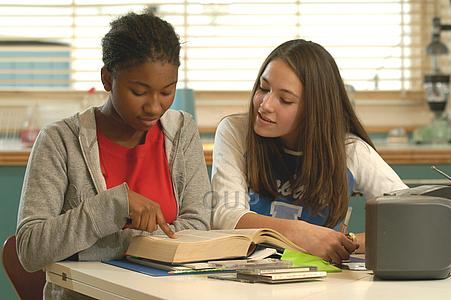
In this post, Peter Redpath, co-author of Incredible English, teacher trainer and ELT consultant, discusses practising and correcting pronunciation through activities that encourage students to read aloud in class.
Sometimes it is worth questioning our procedures and attitudes in the classroom: asking the question “why”? Why use this technique or procedure and what is its value? By doing so, we continually reassess our attitudes, principles and procedures as a teacher. We avoid becoming dinosaurs.
Reading aloud was a regular activity in language lessons when I was a schoolboy. Some of us loved it; others hated it. The procedure went something like this: one of the kids in the class read from the textbook, but only the first sentence of the text. Then a different child would read the next sentence and so on, around the classroom. Some teachers worked methodically around the classroom; you knew when your turn would come
For some children (sadly, myself included), it was an opportunity to turn off and only turn on when the child seated alongside started to read aloud. Other teachers were more alert to the tricks of children like me. They chose the reader at random so you never knew when you might be exposed as a daydreamer.
As I struggled through my sentence the teacher corrected me–and believe me, in my case, there was a lot to correct! At the end of the sentence I heaved a mental sigh of relief as the spotlight of the teacher’s attention moved onto the next pupil. By the end of the reading aloud activity a lot of correction had taken place. After that, we worked through a comprehension task (usually 10 comprehension questions!).
Does this sound familiar to you? Reading out loud in front of the whole class is a technique almost as old as formal education itself. And it hasn’t gone away. Around the world, it remains a methodological mainstay for many teachers. But, as with everything we do, it is always worth asking the question: what are my principles for doing this? Why ask my students to read out loud? Pedagogically, what value does it have? What are the outcomes for my learners?
For a start, it is a real life skill. We read to our children at bedtime; we read out clips from the newspaper to our partners; newscasters and radio presenters read scripts to us. But if you think about it, it is quite a restricted list. We do not spend much of our time reading aloud. And when we do, it is usually only a snippet, a small amount.
So why do we ask our pupils to read aloud in the classroom? What are the aims?
Well, one possible aim, and one often cited by teachers, is to improve pronunciation. But I need to be careful here. If the text is 20 sentences long and 20 children read a sentence each and each child makes only two errors, potentially I will have corrected 40 pronunciation errors by the end of the activity. 40 pronunciation errors are eminently forgettable. It’s too much.
To make pronunciation work targeted and effective I need to select what the children read aloud/pronounce and to restrict the quantity. Maybe two or three sentences only? I can anticipate the pronunciation problems my learners will have with the three sentences and be prepared to deal with them. Now my pronunciation work is more manageable, both for me and for the children.
It is possible, in fact, to argue that reading aloud is a combination of reading skills and speaking skills. I think it’s a good idea to keep the two skills separated in this particular instance. Reading aloud to work on pronunciation will be most effective for the kids if they are not distracted by trying to understand the text. In other words, this type of work is best done after they have worked on comprehension of the text i.e. completed the tasks that help them to understand the text. It is the last thing we do rather than, as is so often the case, the first thing we do.
Can you think of a learning aim that justifies reading aloud as I describe?